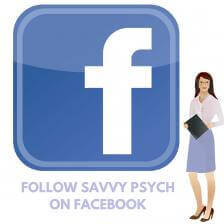Anxiety, Depression, or Both?
Anxiety and depression are both challenging disorders—to make matters worse, they occur together up to 50% of the time. Savvy Psychologist untangles the complicated puzzle.

Anxiety and depression go together like peanut butter and jelly, peas and carrots, or bacon and eggs. And while they don’t exactly taste great together, they often go hand in hand. In fact, nearly 50% of people diagnosed with depression can also be diagnosed with an anxiety disorder, and vice versa.
Depression and anxiety are fundamentally different—depression is based in hopelessness and helplessness, while anxiety is steeped in fear of the uncertain. But even though they’re different, they overlap in many ways. Here are five big similarities:
Shared symptom #1: Irritability
Anxiety, by its very nature, puts people on edge, which makes it easier to push them over that edge. When you’re already amped up, every additional little thing seems like a giant hassle. With depression, it’s a myth that folks only feel sad. Instead, depression often manifests as irritability and grouchiness, especially in men.
Shared symptom #2: Problems sleeping
In depression, sleep can go either way—either too much or too little. Anxiety almost always means trouble getting to sleep due to tension or racing thoughts, or waking up in the middle of the night with a 100 MPH mind. Either way, when you’re fighting depression or anxiety, exhaustion is the last thing you need.
Shared symptom #3: Difficulty concentrating
With either depression or anxiety, reading a book goes out the window, zoning out during movies becomes the norm, and it can even be hard to stay engaged in conversation. Trouble focusing comes in slightly different versions for depression or anxiety—with depression it’s simply impossible to sustain attention, while with anxiety you’re distracted by worries–but either way, “concentrate” is limited to your orange juice.
Shared symptom #4: Restlessness
The bouncy leg, the wringing of hands, the grinding of teeth—anxiety seldom comes without motion. With depression, some folks experience what’s called psychomotor agitation–they pace, bite their nails, or fidget. (Others feel weighed down by a ton of bricks, and some folks feel both slowed down and restless at the same time).
Shared symptom #5: No fun
It’s hard to kick back and have fun when you’re anxious, depressed, or both. In depression, this is a core symptom officially called anhedonia, which literally means “without pleasure.” Depression also saps energy and motivation, so doing what you love seems pointless and effortful. With anxiety, not having any fun is more of an result of the disorder—anxiety comes with high physical tension, which is pretty much incompatible with relaxing or letting loose.
Luckily, overlapping problems mean there are some shared solutions. What to do? Surprisingly, a lot—though it’s important to note that none of the following solutions is a cure-all. If you’re getting hit from both sides, definitely see a mental health professional or, to start, your primary care physician. But the following 4 things can all be done at home in addition to whatever you and your doctors agree on.
Shared solution #1: Do things you used to like, even if you don’t feel like it
Sometimes depression and anxiety don’t allow you to do anything at all. But if depression lets you get out of bed and anxiety lets you leave the house, try to do whatever it was you used to like before you got sick. It will seem pointless and stupid, but try. You’ll likely feel better than if you hadn’t. And while taking your dog for a walk or working in your garden may seem like a drop in the bucket, keep going—fill that bucket drop by drop. Doing what you love (or used to love) is what will save you.
Shared solution #2: Get hardcore about sleep
Folks with depression and anxiety often become semi-nocturnal, waking up in the middle of the night or way before the alarm. A good portion of the sleep challenges are part of the disorders, but you can minimize the damage with good sleep hygiene: go to bed only when you’re sleepy, wake up at the same time every day (yes, even on weekends) and get out of bed if you can’t sleep to avoid associating your bed with wakefulness, even if it’s 2 am. See also: I Can’t Sleep: 5 Myths About Insomnia, Busted and How To Sleep Now: Quick Fixes for Insomnia.
An important note: don’t feel guilty if you need sleep medication to get through a tough time. Sleep is sleep, drugged or not, and you need sleep to fight whatever you’re facing, especially life changes that trigger anxiety or depression, like a seriously ill spouse or losing your job. Sleep medication isn’t a long term solution, but it’s designed to get you through a rough patch.
Shared solution #3: Exercise
I know, exercise is the last thing you want to do when you’re depressed. And it’s probably not at the top of your list if you’re anxious either (unless exercising lets you avoid whatever you’re anxious about).
But study after study shows that aerobic exercise reduces depression—one found 30 minutes a day, four times a week for six weeks did the trick, while another showed 30 minutes a day for 10 consecutive days led to significant reduction in symptoms. And a 2014 review of eight different studies found exercise to be helpful for anxiety as well, though it also found that medication is still more effective.
Shared solution #4: Dig down
Think back on your last few days and pick out a particularly bad moment—a time you felt really demoralized or anxious. The next step is hard, but try to zero in on what you were thinking at the time. What was going through your head? Maybe it was something like, “I can’t do this,” “I’ll never feel better,” or “What if I get in trouble?”
Whatever your thought, here’s the next step: ask, “What does that mean about me?”
Ask this question again with each successive answer, cycling through a few times until you hit upon a simple negative statement about yourself. Using our example of “I can’t do this” asking, “What does that mean about me?” might yield, “I can’t even do my job.” The next few rounds of, “And what does THAT mean about me?” might yield, successively, “I’m so stupid to mess this up,” and finally, “I’m a total failure.”
And boom, you’ve got it. This simple statement is called a core belief, and it is the heart (and source) of most other depressive or anxious thoughts. In my experience, depressive core beliefs are generally simple, even stark: I’m a failure, I’m stupid, I’m worthless, I’m helpless, or I’m broken—though there are many more.
Anxious core beliefs tend to be predictive, like I’ll be ruined, it’ll be all my fault, no one will love me, I won’t be able to handle it, or I’ll be judged.
Once you have your core belief, challenge it. Is this really true? I guarantee it’s not, even if it feels like it is. If it’s really deep-seated, take it to a skilled therapist you like and trust. He or she will help you shrink it and grow a new, more healthy belief: I’m OK, I’m enough, I can handle this, I’m learning and improving.
To wrap up, anxiety and depression are difficult enough on their own; the double whammy of both is a big challenge, but with so many overlapping symptoms, the good news is that working on one often magically improves the other. Hang in there, get help, and watch your life come back to, well, life.
Never miss your weekly Savvy! Get every Savvy Psychologist episode delivered straight to your inbox by signing up for the newsletter or get them in your feed on Facebook. And listen to more Savvy Psychologist on iTunes, Stitcher, or Spotify.
REFERENCES:
https://www.adaa.org/understanding-anxiety/depression
Craft, L.L. & Perna, F.M. (2004). The benefits of exercise for the clinically depressed. Primary Care Companion Journal of Clinical Psychiatry, 6, 104-111.
Jayakody, K., Gunadasa, S., Hosker, C. (2014). Exercise for anxiety disorders: Systematic review. British Journal of Sports Medicine, 48, 187-196.
Image courtesy of Shutterstock.






